One of our collecting friends in Nebraska is David O’Hanlon. His collecting goes beyond radios, to include phonographs, Vogue Records, drawings & paintings by noted Nebraska artist Kent Bellows, and much more.
Jeannette & I especially enjoyed learning more about Dave’s phonographs.
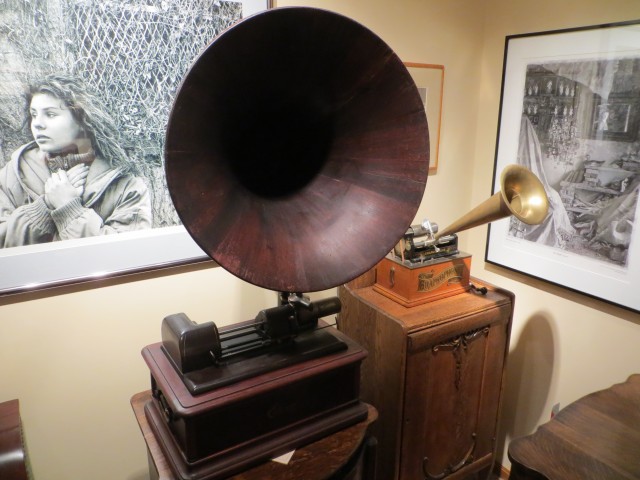
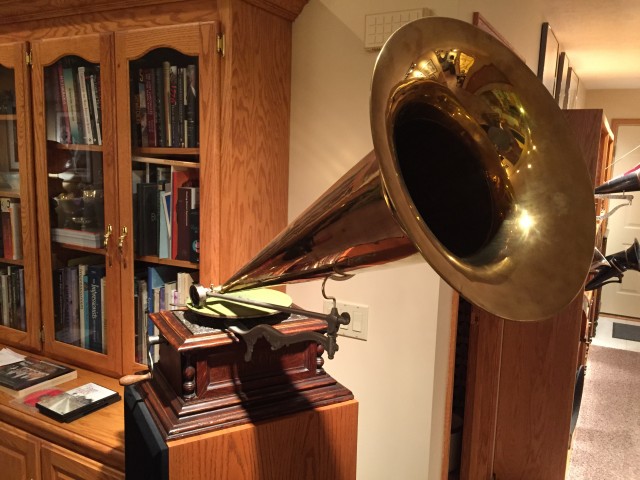
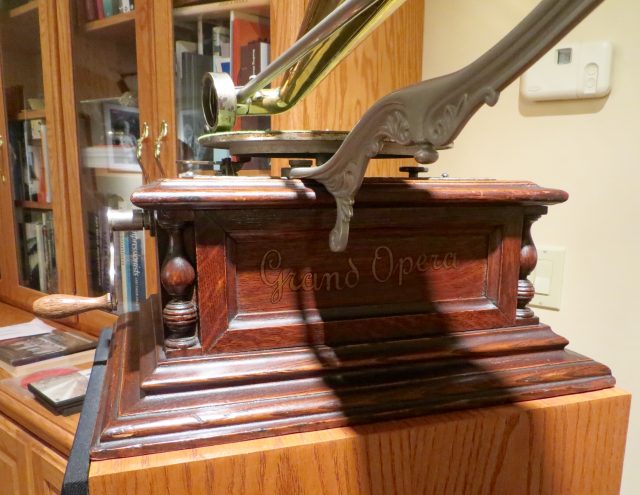
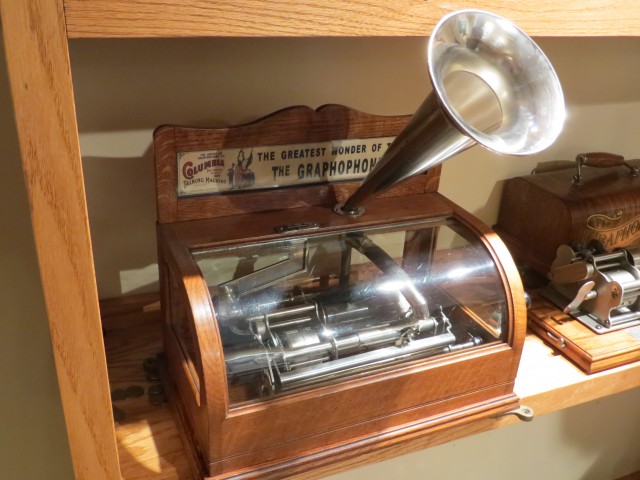 This last one is a coin-operated phonograph with one selection on a cylinder… “Take Me Out To The Ball Game”. The phonograph takes nickels from the 1800’s.
This last one is a coin-operated phonograph with one selection on a cylinder… “Take Me Out To The Ball Game”. The phonograph takes nickels from the 1800’s.
The above “Jukebox” is a Shyvers Multiphone. It was manufactured starting in 1939 by a Seattle, Washington company. This unit was connected to a phone line. You told a female DJ what number song you wanted, and she’d play it for you through the 4-inch speaker at your restaurant booth or counter. Kind of the first music “streaming”.
Jeannette & Dave are discussing this historic view of Blair, Nebraska done by Kent Bellows. It’s an extremely detailed hand-drawn copy of an old photo. You can click on this photo, or any others in the posts to see them better.
One other thing. Dave supplied Hugh & Jane Hunt with much expertise and guidance as they built their fantastic radio collection.
We always enjoy visiting with Dave!
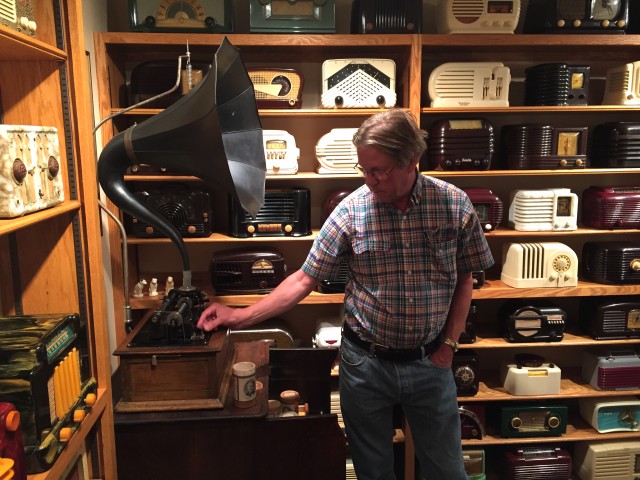
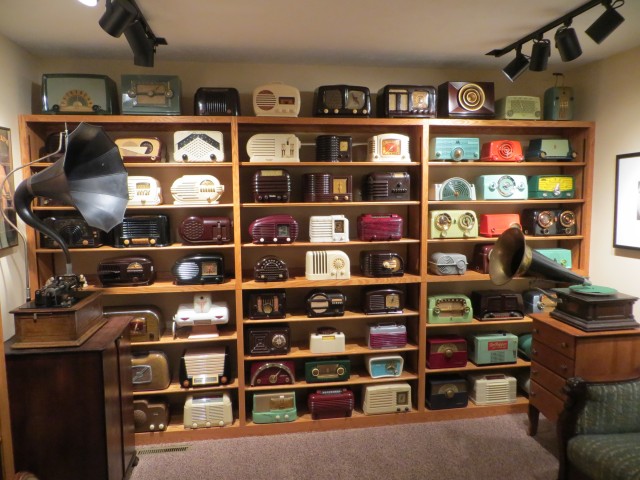
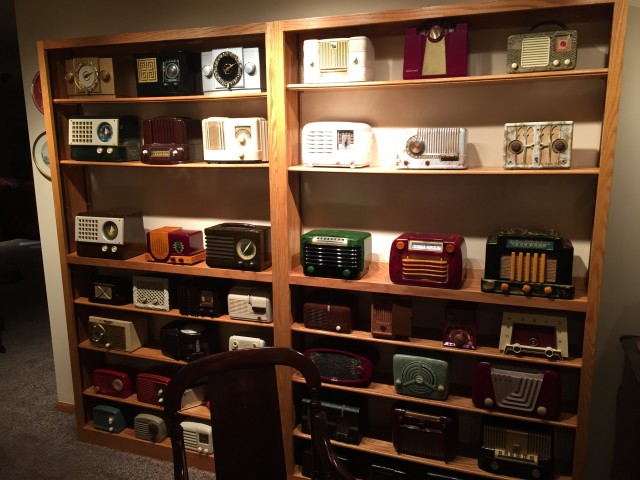
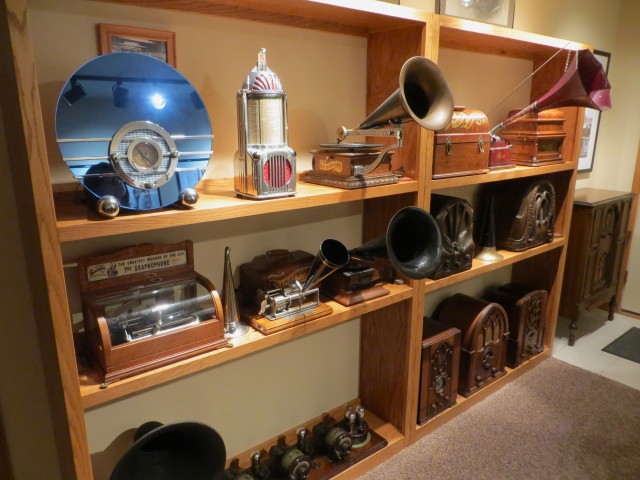
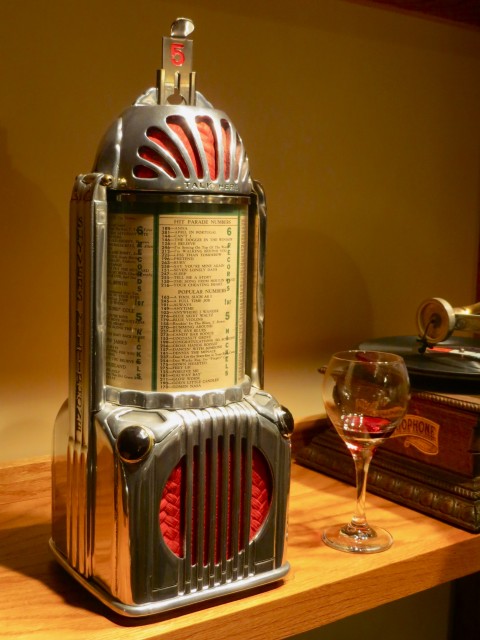
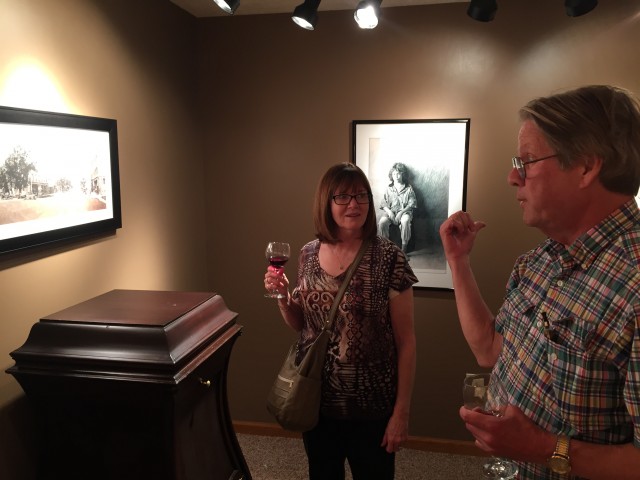
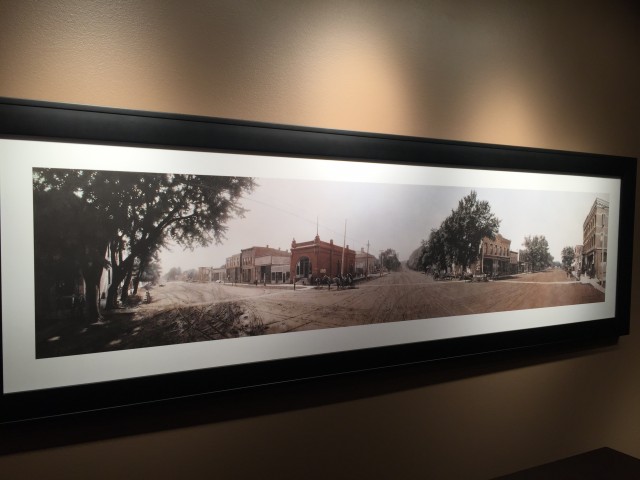
I notice a red Columbia CBS Model 5165 AM Radio on the next to the bottom of the middle shelf above the Emerson green radio.
That is an unusual radio not often seen. I have one in a creme white color. I assume this to be Catalin or Plaskon, but not sure. Let me know if you know as the radio museum site I think only says “other Plastics”. If so that radio would probably also be in a red Catalin (or Plaskon) cabinet.
It is a great looking little radio having a very impressive Face Dial with very good sound and reception.
There is no Dial Lamp as one is not needed due to the large Face Dial, but the radio would have benefitted from one, as Dial Lamps just give any radio an added boost. At night on the radio I have it slightly glows in the dark as the vacuum tubes light up the creme white colored cabinet, which I assume to be Catalin or Plaskon.
This radio is not often seen or available, but definitely one that is noticed in any collection.
Editor: The CBS Radio is not Catalin or Plaskon. It’s a 1954 radio. Catalin radios were only manufactured from 1937 to 1946, and Plaskon radios are also pretty well limited to the ‘30’s and ‘40’s. By the 1950’s, most radios were made of styrene, urethane, or similar plastics.
A great reference book on Catalin radios is…”Classic Plastic Radios Of The 1930’s and 1940’s” by John Sideli. It lists all the models of Catalin radios, and I think the only one it missed was the General Electric “Jewel Box”. It’s not perfect on all of the colors of various models, but it does a great job overall.
Also, if you don’t have it, the book “Plastic Radios” by Mark V. Stein is a solid reference book. It misses some models, including the CBS radio, but it’s very helpful for the most popular collectible radios. The price/values should only be used as a general guide, as they are out of date.
Thank you for your interest.
Thanks for the clarification. I will get the books you mentioned as they are one’s not currently in my personal library of radio related material.
I had a friend, Tom Cunningham who passed away several years ago and ran the Radio Salon (out of Los Angeles) Internet site selling restored Bakelite, Catalin, Plaskon and various types of plastic radios. You may remember him? Tom was truly a genius when it came to restoring many plastic type forms of radios and I use the word “plastic” in the generic sense.
I once asked Tom about refinishing wood radios and he told me he knew NOTHING about refinishing wood radios! I doubt that was really the case with Tom’s knowledge of wood refinishing, but he really loved working with non-wooden radio cabinets.
Tom was my information source but as he is now gone, I just have to guess at what plastic a radio might really be (if even plastic is the correct overall term to be used).
Tom Cunningham really knew and understood all forms of Plastic probably better than just about anybody ever in the business, but sadly took a great deal of this information with him to the grave.